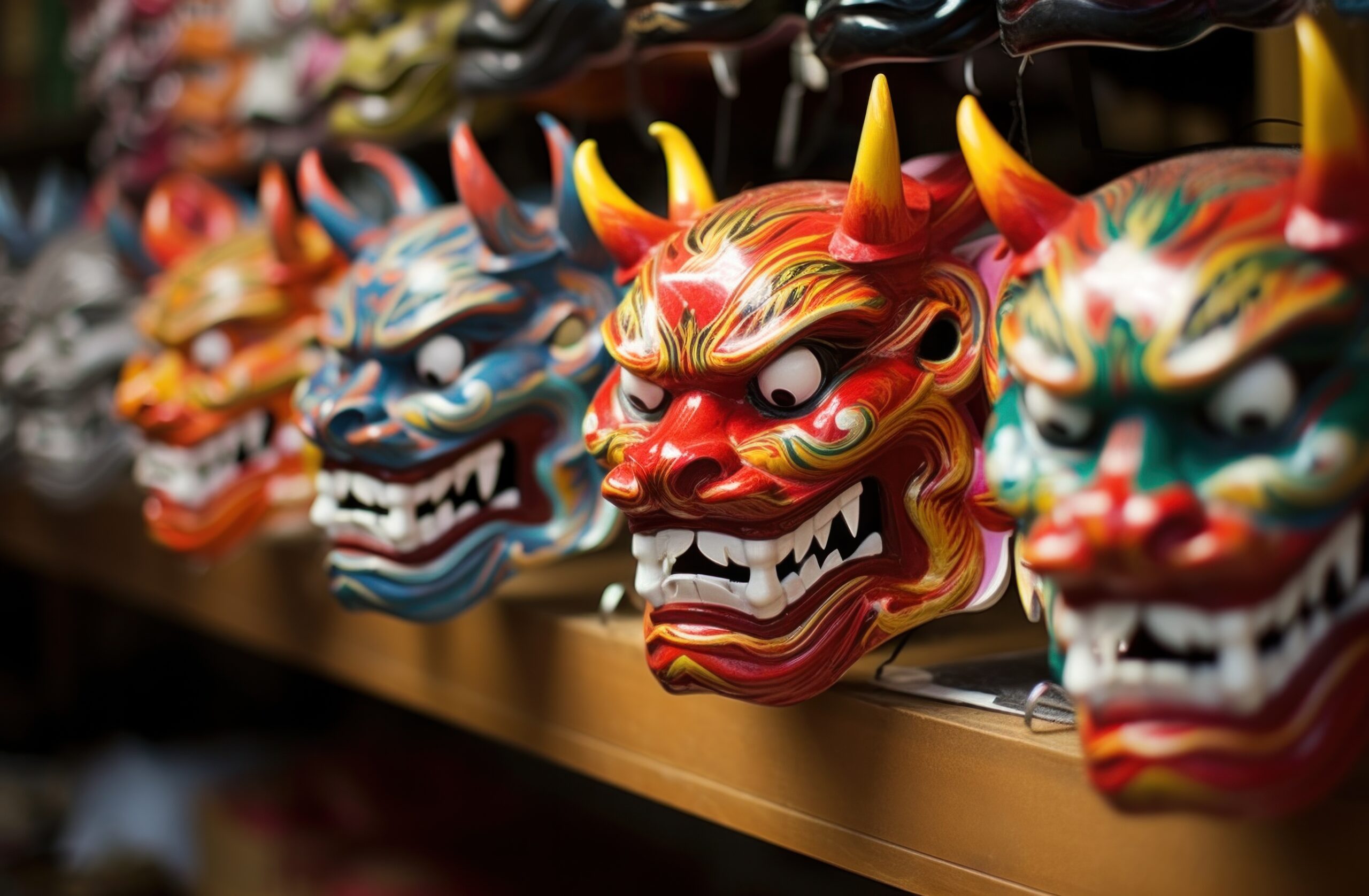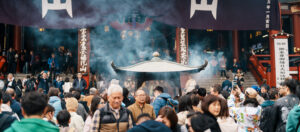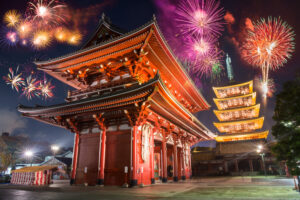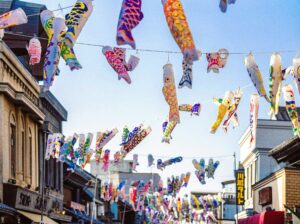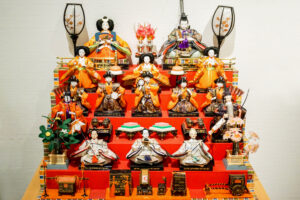In the heart of Japan’s winter, just as the spring whispers its impending arrival, the Setsubun Festival brings an ancient tradition to the modern streets, homes, and temples of Japan. Celebrated yearly on the day before the beginning of spring according to the Japanese lunar calendar, typically around February 3rd, Setsubun blends myth, religion, and culture in a vibrant spectacle centered around casting out evil spirits and inviting good luck. At the core of this enchanting festival lies a unique tradition: the throwing of beans. This article delves into the profound layers of Setsubun, from its historical origins and significant rituals to its festive foods and modern-day celebrations, offering a comprehensive look at Japan’s beloved bean-throwing tradition.
Setsubun Festival: Japan’s Seasonal Celebration
The Setsubun Festival marks an important moment in Japan’s seasonal calendar, signifying the eve of the first day of spring. Historically linked with the Lunar New Year, Setsubun has evolved over centuries but retains its significance as a time of renewal and purification. Across Japan, temples and shrines bustle with activity, and families gather in anticipation of the rituals that promise to cleanse the past and welcome the future. The air is filled with excitement and the spirit of rejuvenation, as communities come together to celebrate the changing seasons in a festivity that is uniquely Japanese yet universally understood as a rebirth.
Exploring The Origins Of Setsubun: A Historical View
Setsubun’s roots can be traced back to ancient China, from where it made its way to Japan along with the lunar calendar and other cultural practices. Initially, it was a part of the New Year festivities, designed to mark the division of seasons as per the lunar calendar. Over the years, Setsubun became its own distinct celebration, although it retained the essence of purifying oneself and one’s surroundings to welcome the new season. This purification process was believed to drive away evil spirits and illness, ensuring health and fortune for the year ahead.
The Significance of Setsubun: More Than Just Beans
While throwing beans, known as mamemaking, is the most visually striking aspect of Setsubun, the festival embodies deeper meanings and practices. It represents the perpetual battle between good and evil, purity and impurity, and the cyclic nature of life and seasons. The beans, symbolizing purity because of their ability to repel evil, are tossed not only to drive out bad spirits but also to invite luck and prosperity. Chants of "Oni wa soto! Fuku wa uchi!" or "Demons out, luck in!" accompany the throwing, encapsulating the festival’s essence in a simple yet profound manner.
Rituals Unveiled: The Practices of Setsubun Festival
Setsubun encompasses various rituals aimed at cleansing and blessing. One of the most iconic is mamemaki, where roasted soybeans are thrown to expel demons and invite happiness into homes. In temples and shrines, priests and celebrities often perform mamemaki, throwing beans to crowds who eagerly catch them for good luck. Another significant ritual is the hanging of hiiragi iwashi, decorations made of holly leaves and sardine heads, on entrances to ward off evil spirits. The sharp smell and pointed leaves are believed to deter malevolent forces.
Mamemaki: The Heart of Setsubun’s Bean-Throwing Tradition
Mamemaki is the heart and soul of the Setsubun Festival. This ritual involves family members, often the male head of the household or someone born in the corresponding Chinese zodiac year, throwing roasted soybeans inside and outside their homes. As the beans scatter, they are believed to cleanse the area of evil spirits. Participants often wear demon masks, playfully embodying the spirits that need to be driven away, adding a theatrical element to the tradition. The beans thrown are later collected and eaten, symbolizing the internalization of luck and health for the number of years one has lived, plus one extra year for added fortune.
Demons Out, Luck In: Understanding Setsubun Sayings
The chant "Oni wa soto! Fuku wa uchi!" is pivotal to Setsubun, rich in symbolism and reflective of the festival’s dual purpose: to repel misfortune and attract happiness. "Oni," or demons, represent the hardships and evils of the previous year, while "Fuku," or luck, symbolizes the desired prosperity and health for the coming year. This saying, while simple, is a potent reminder of the human desire for renewal and the belief in the power of rituals to effect change in our lives.
Setsubun’s Festive Foods: A Culinary Journey
Beyond beans, Setsubun is celebrated with special foods believed to bring good fortune. Ehomaki, a type of sushi roll, is particularly prominent. Traditionally eaten in silence while facing the lucky direction of the year, it encapsulates the hope for happiness and success. Other regions enjoy seasonal sashimi or even a simple dish of the thrown beans, each element of the meal imbued with symbolic meaning and the spirit of the season.
Ehomaki: Sushi Rolls for Good Fortune
Ehomaki, or "lucky direction rolls," have become synonymous with Setsubun. These thick sushi rolls are filled with seven ingredients, reflecting the Seven Gods of Fortune, and are not cut into pieces to preserve the good luck. The ritual of eating ehomaki in silence while facing the year’s auspicious direction stems from a belief that this will ensure happiness and prosperity. This practice, originating in the Kansai region, has spread across Japan, becoming a deliciously anticipated part of the festival’s traditions.
Setsubun Across Japan: Regional Variations
While the essence of Setsubun is shared, its celebration varies significantly across Japan, reflecting the country’s rich cultural diversity. In some areas, traditional dances and performances accompany mamemaki, while others may have unique local foods or customs associated with the festival. These regional variations add depth and color to Setsubun, showcasing the multifaceted nature of Japanese traditions and the ways in which they adapt and evolve while maintaining their core significance.
Modern Celebrations: Setsubun in Today’s Japan
In contemporary Japan, Setsubun continues to be a much-loved festival, blending tradition with modernity. Schools, offices, and community centers often organize their own mamemaki events, and celebrities frequently participate in large public celebrations, bringing a sense of unity and festivity. Social media and modern technology have also allowed for new ways to share and enjoy the traditions, from virtual bean-throwing games to online tutorials on making ehomaki. Despite these modern adaptations, the heart of Setsubun remains unchanged, a testament to the enduring appeal of this ancient festival.
Setsubun at Home: How Families Celebrate
For many Japanese families, Setsubun is a time of togetherness and fun. Preparing ehomaki, making demon masks, and throwing beans around the house are activities that engage all generations, fostering a sense of continuity and connection to cultural heritage. It’s a time when stories and teachings are passed down, and the simple acts of cooking, eating, and celebrating together strengthen familial bonds. These home celebrations are the foundation of Setsubun, ensuring that its traditions remain vibrant and meaningful.
The Future of Setsubun: Preserving Tradition
As Japan navigates the complexities of the 21st century, the question of how to preserve traditional festivals like Setsubun becomes increasingly pertinent. Efforts by communities, cultural organizations, and even the government to promote and protect these traditions are crucial. By incorporating modern elements without losing sight of the festival’s historical and cultural significance, Setsubun can continue to be a cherished event that bridges the past and the future, inviting all who celebrate to look forward with hope and joy.
The Setsubun Festival, with its dynamic blend of ritual, tradition, and community engagement, continues to be a vibrant and cherished celebration across Japan. From the scattering of beans to the silent wishes made over ehomaki, Setsubon encapsulates a universal hope for renewal and prosperity. As Japan moves forward, the enduring appeal of this ancient festival speaks to the timeless human desire for connection, protection, and the welcoming of new beginnings. In preserving the rich traditions of Setsubun, Japan not only honors its past but also sows the seeds for future generations to cherish and perpetuate.
